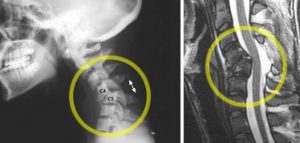The expression “I’d rather be rich than famous” rings far truer to those over 40 and self-employed than other populations. Most of us strive to build wealth using our vocation and a network of people who can facilitate that end….as such “fame & notoriety” tend to go, at least partly, hand-in-hand with wealth. As Zig Ziegler pointed out ‘the only way you get what you want is by helping enough other people to get what they want’…..we do this with spinal care.
People want health, wellness and pain-relief….and they want it (typically) quick and as inexpensively as possible. So, long-term “profit-based” care can only persist IF effective (a.k.a evidenced/science-based) care is the format of the practice.
The beauty of most people is their ‘amiability‘ and willingness to give the benefit of the doubt to those they trust….IF you try your best most people tend to stick with you. There may be some itinerant patients however most tend to stick with a doctor once they’ve built a relationship of trust and that trust is from confidence and faith the doctor knows best, and has their best interest at heart.
There is no shortage of ways to take advantage of patients using gimmicks, high-priced junk science and lies. However you are far less likely to see good retention, referrals or longevity.
Protocol/evidenced-based Decompression, ‘intense’ heat modalities (Class IV high-power Laser) exercise and ergonomic-bio-mechanical education (McGill) are reasonable, science-based treatment regiments ANY doctor should be confident & proud to deliver and ANY patient to receive. We’ve spent a combined 50 years developing our protocols and equipment to create both science/evidenced-based care as well as profit–based care. These procedures can stand up to patient scrutiny and have a long track record of “making money“.
I believe the vast majority of DCs never want to fool, misguide or rip-off patients. We feel the exact same. We all have to get up and go to bed with ourself & our deeds playing in our head. Pride, confidence and faith in the treatments you deliver and the equipment you deliver them with have to be both scientific-evidenced based and profitable…..Otherwise why bother?


